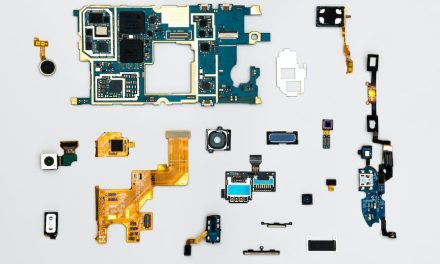Table of Contents
- Introduction
- The Role of Innovative Leadership in Shaping Technological Change
- Emerging Technologies and Their Impact on Innovative Leadership
- Strategies for Fostering Innovation in Leadership to Drive Technological Change
- Case Studies: Successful Examples of Innovative Leadership Driving Technological Change in 2023
- Q&A
- Conclusion
“Empowering the Future: Innovative Leadership Fueling Technological Transformation in 2023”
Introduction
Innovative leadership plays a crucial role in driving technological change in 2023. As the world continues to evolve at an unprecedented pace, leaders who embrace innovation are at the forefront of shaping the future. By fostering a culture of creativity, embracing emerging technologies, and encouraging collaboration, innovative leaders are driving transformative change across industries. In this article, we will explore how innovative leadership is propelling technological advancements in 2023 and the impact it has on shaping our future.
The Role of Innovative Leadership in Shaping Technological Change

In today’s rapidly evolving world, technological advancements are transforming industries and reshaping the way we live and work. From artificial intelligence to blockchain, these innovations have the potential to revolutionize entire sectors and drive economic growth. However, the successful implementation of these technologies requires more than just technical expertise. It requires innovative leadership.
Innovative leadership plays a crucial role in shaping technological change. It is the driving force behind the adoption and integration of new technologies within organizations. These leaders have a deep understanding of the potential of emerging technologies and are able to envision how they can be leveraged to create value and drive business success.
One of the key responsibilities of innovative leaders is to create a culture of innovation within their organizations. They foster an environment that encourages experimentation, risk-taking, and learning from failure. By promoting a culture of innovation, these leaders empower their teams to think outside the box and come up with creative solutions to complex problems.
Furthermore, innovative leaders are not afraid to challenge the status quo. They are willing to question existing processes and systems, and are open to exploring new ways of doing things. This mindset allows them to identify opportunities for technological change and drive the adoption of new technologies that can improve efficiency, productivity, and customer satisfaction.
In addition to fostering a culture of innovation, innovative leaders also play a crucial role in building and nurturing a diverse and inclusive workforce. They understand that diversity of thought and perspective is essential for driving innovation and technological change. By creating a diverse team, these leaders are able to tap into a wide range of ideas and insights, leading to more innovative solutions.
Moreover, innovative leaders are skilled at identifying and attracting top talent. They understand the importance of having a team with diverse skill sets and expertise. By recruiting individuals with a passion for technology and a track record of innovation, these leaders ensure that their organizations have the necessary capabilities to drive technological change.
Furthermore, innovative leaders are adept at building strategic partnerships and collaborations. They understand that no organization can drive technological change in isolation. By forging partnerships with other organizations, they are able to leverage their collective expertise and resources to accelerate the adoption and implementation of new technologies.
In conclusion, innovative leadership is a critical driver of technological change in today’s fast-paced world. These leaders create a culture of innovation, challenge the status quo, and build diverse and inclusive teams. They attract top talent, forge strategic partnerships, and leverage emerging technologies to drive business success. As we move into 2023 and beyond, the role of innovative leadership in shaping technological change will only become more important. Organizations that embrace innovative leadership will be well-positioned to thrive in the digital age.
Emerging Technologies and Their Impact on Innovative Leadership
In today’s rapidly evolving world, technological advancements are reshaping industries and transforming the way we live and work. As we enter the year 2023, it is clear that innovative leadership is playing a crucial role in driving technological change. Emerging technologies are not only disrupting traditional business models but also presenting new opportunities for leaders to create value and stay ahead of the competition.
One of the most significant emerging technologies is artificial intelligence (AI). AI has the potential to revolutionize various sectors, from healthcare to finance and manufacturing. Innovative leaders are harnessing the power of AI to streamline processes, improve decision-making, and enhance customer experiences. By leveraging AI-powered algorithms and machine learning, leaders can analyze vast amounts of data and gain valuable insights that were previously unimaginable. This enables them to make data-driven decisions and develop innovative strategies that drive growth and efficiency.
Another technology that is reshaping the business landscape is the Internet of Things (IoT). IoT refers to the network of interconnected devices that can communicate and share data with each other. Innovative leaders are leveraging IoT to create smart, connected ecosystems that improve operational efficiency and enhance customer experiences. For example, in the retail industry, IoT-enabled devices can track inventory levels in real-time, optimize supply chain management, and personalize customer interactions. By embracing IoT, leaders can unlock new revenue streams, reduce costs, and gain a competitive edge.
Blockchain technology is also driving technological change and transforming industries. Blockchain is a decentralized and transparent ledger that enables secure and efficient transactions. Innovative leaders are exploring the potential of blockchain to revolutionize various sectors, such as finance, supply chain management, and healthcare. By leveraging blockchain, leaders can enhance transparency, reduce fraud, and streamline processes. For instance, in the healthcare industry, blockchain can enable secure sharing of patient data, improve interoperability, and enhance patient privacy. By embracing blockchain, leaders can create trust, improve efficiency, and drive innovation.
In addition to these emerging technologies, innovative leaders are also embracing automation and robotics. Automation is revolutionizing industries by replacing repetitive tasks with intelligent machines. Leaders are leveraging automation to improve productivity, reduce costs, and enhance safety. For example, in the manufacturing sector, robots can perform complex tasks with precision and speed, leading to increased efficiency and quality. By embracing automation, leaders can free up human resources to focus on more strategic and creative tasks, driving innovation and growth.
However, with these technological advancements come challenges. Innovative leaders must navigate ethical considerations, such as data privacy and security. They must also address the potential impact of automation on the workforce and ensure a smooth transition for employees. Additionally, leaders must foster a culture of innovation and continuous learning to keep up with the pace of technological change.
In conclusion, innovative leadership is driving technological change in 2023. Emerging technologies such as AI, IoT, blockchain, and automation are reshaping industries and presenting new opportunities for leaders to create value. By embracing these technologies, leaders can streamline processes, improve decision-making, and enhance customer experiences. However, they must also address ethical considerations and ensure a smooth transition for employees. As we move forward, it is clear that innovative leadership will continue to play a crucial role in driving technological change and shaping the future of industries.
Strategies for Fostering Innovation in Leadership to Drive Technological Change
In today’s rapidly evolving technological landscape, innovative leadership has become a crucial driver of change. As we enter the year 2023, organizations across industries are recognizing the need to foster innovation in their leadership teams to stay competitive and adapt to the ever-changing digital landscape. This article explores strategies for fostering innovation in leadership to drive technological change.
One key strategy for fostering innovation in leadership is to create a culture that encourages experimentation and risk-taking. Leaders must create an environment where employees feel empowered to explore new ideas and take calculated risks. This can be achieved by providing resources and support for innovation initiatives, as well as recognizing and rewarding innovative thinking. By fostering a culture of experimentation, leaders can inspire their teams to think outside the box and drive technological change.
Another important strategy is to promote diversity and inclusion within leadership teams. Research has consistently shown that diverse teams are more innovative and better equipped to solve complex problems. By bringing together individuals with different backgrounds, perspectives, and skill sets, leaders can tap into a wealth of creativity and drive technological change. It is essential for leaders to actively seek out diverse talent and create an inclusive environment where everyone’s voices are heard and valued.
Furthermore, leaders must prioritize continuous learning and development. In the fast-paced world of technology, staying up to date with the latest trends and advancements is crucial. Leaders should invest in their own development as well as that of their teams, providing opportunities for training, workshops, and conferences. By fostering a culture of continuous learning, leaders can stay ahead of the curve and drive technological change within their organizations.
Collaboration is another key strategy for fostering innovation in leadership. In today’s interconnected world, no organization can thrive in isolation. Leaders must actively seek out partnerships and collaborations with other organizations, both within and outside their industry. By working together, leaders can leverage each other’s strengths and expertise, driving technological change on a larger scale. Collaboration also allows for the sharing of resources and knowledge, accelerating innovation and creating a win-win situation for all parties involved.
Lastly, leaders must embrace a forward-thinking mindset and be open to change. Technology is constantly evolving, and leaders must be willing to adapt and embrace new ideas and approaches. This requires a willingness to challenge the status quo and let go of outdated practices. By embracing change, leaders can inspire their teams to do the same and drive technological change within their organizations.
In conclusion, innovative leadership is a driving force behind technological change in 2023. By fostering a culture of experimentation, promoting diversity and inclusion, prioritizing continuous learning, encouraging collaboration, and embracing change, leaders can inspire their teams to think innovatively and drive technological change within their organizations. In this rapidly evolving digital landscape, organizations that prioritize innovation in their leadership teams will be better equipped to adapt and thrive.
Case Studies: Successful Examples of Innovative Leadership Driving Technological Change in 2023
Case Studies: Successful Examples of Innovative Leadership Driving Technological Change in 2023
In today’s rapidly evolving technological landscape, innovative leadership has become a crucial factor in driving change and staying ahead of the competition. Companies that embrace innovative leadership are more likely to adapt to new technologies, seize opportunities, and achieve sustainable growth. In this article, we will explore some successful case studies of innovative leadership driving technological change in 2023.
One notable example is Tesla, the electric vehicle manufacturer led by Elon Musk. Under Musk’s innovative leadership, Tesla has revolutionized the automotive industry by introducing cutting-edge electric vehicles and advanced autonomous driving technologies. By challenging the status quo and pushing the boundaries of what is possible, Musk has transformed Tesla into a global leader in sustainable transportation. Through his visionary leadership, Musk has not only driven technological change within his own company but has also inspired other automakers to invest in electric vehicles and embrace a more sustainable future.
Another case study of innovative leadership driving technological change is Amazon, led by Jeff Bezos. Bezos has consistently pushed the boundaries of e-commerce and transformed Amazon into a tech giant that dominates various industries. Through his relentless focus on customer experience and continuous innovation, Bezos has introduced game-changing technologies such as Amazon Prime, Alexa, and Amazon Web Services. These innovations have not only disrupted traditional retail but have also revolutionized cloud computing and voice-controlled technology. Bezos’ innovative leadership has not only driven technological change within Amazon but has also influenced the entire e-commerce and technology landscape.
Microsoft, under the leadership of Satya Nadella, is another prime example of how innovative leadership can drive technological change. When Nadella took over as CEO in 2014, he recognized the need for Microsoft to adapt to the changing technology landscape and shift its focus towards cloud computing and artificial intelligence. Through his strategic vision and emphasis on collaboration, Nadella successfully transformed Microsoft into a cloud-first company. Under his leadership, Microsoft has launched Azure, a leading cloud computing platform, and has made significant advancements in AI with products like Cortana and Microsoft Teams. Nadella’s innovative leadership has not only revitalized Microsoft but has also positioned the company as a major player in the cloud and AI industries.
In the healthcare sector, Johnson & Johnson, led by Alex Gorsky, has demonstrated how innovative leadership can drive technological change and improve patient outcomes. Gorsky has prioritized innovation and collaboration to develop groundbreaking medical devices, pharmaceuticals, and digital health solutions. Through strategic partnerships and acquisitions, Johnson & Johnson has expanded its capabilities in areas such as robotics, 3D printing, and personalized medicine. Gorsky’s innovative leadership has not only propelled Johnson & Johnson to the forefront of healthcare innovation but has also contributed to advancements in patient care and treatment options.
These case studies highlight the transformative power of innovative leadership in driving technological change. Whether it is in the automotive, e-commerce, technology, or healthcare industry, leaders who embrace innovation and challenge the status quo are more likely to succeed in today’s fast-paced and competitive environment. By fostering a culture of innovation, encouraging collaboration, and investing in research and development, companies can position themselves as leaders in their respective industries and drive technological change that benefits both their organizations and society as a whole.
In conclusion, innovative leadership is a driving force behind technological change in 2023. Through the case studies of Tesla, Amazon, Microsoft, and Johnson & Johnson, we have seen how visionary leaders have transformed their industries through their relentless pursuit of innovation. By embracing innovative leadership, companies can adapt to new technologies, seize opportunities, and achieve sustainable growth in today’s rapidly evolving technological landscape.
Q&A
1. How is innovative leadership driving technological change in 2023?
Innovative leadership is driving technological change in 2023 by fostering a culture of creativity and experimentation, encouraging the adoption of emerging technologies, and promoting collaboration and knowledge sharing among teams.
2. What role does innovative leadership play in driving technological change?
Innovative leadership plays a crucial role in driving technological change by setting a vision for the organization, empowering employees to think outside the box, and providing the necessary resources and support to implement innovative ideas and technologies.
3. What are some examples of innovative leadership driving technological change in 2023?
Examples of innovative leadership driving technological change in 2023 include the implementation of artificial intelligence and machine learning in various industries, the adoption of blockchain technology for secure transactions, and the development of sustainable and eco-friendly solutions through advanced technologies.
4. How does innovative leadership impact the future of technology?
Innovative leadership has a significant impact on the future of technology by driving continuous innovation, pushing boundaries, and challenging the status quo. It encourages the development of groundbreaking technologies, fosters a culture of adaptability, and ensures organizations stay ahead in an ever-evolving technological landscape.
Conclusion
In conclusion, innovative leadership plays a crucial role in driving technological change in 2023. Through their forward-thinking mindset, visionary leaders are able to identify emerging technologies and leverage them to transform industries and drive growth. By fostering a culture of innovation, these leaders encourage their teams to think outside the box and explore new possibilities. They also prioritize collaboration and partnerships, allowing for the exchange of ideas and expertise to accelerate technological advancements. With innovative leadership at the helm, organizations are well-positioned to embrace and harness the power of technology to shape a better future.




